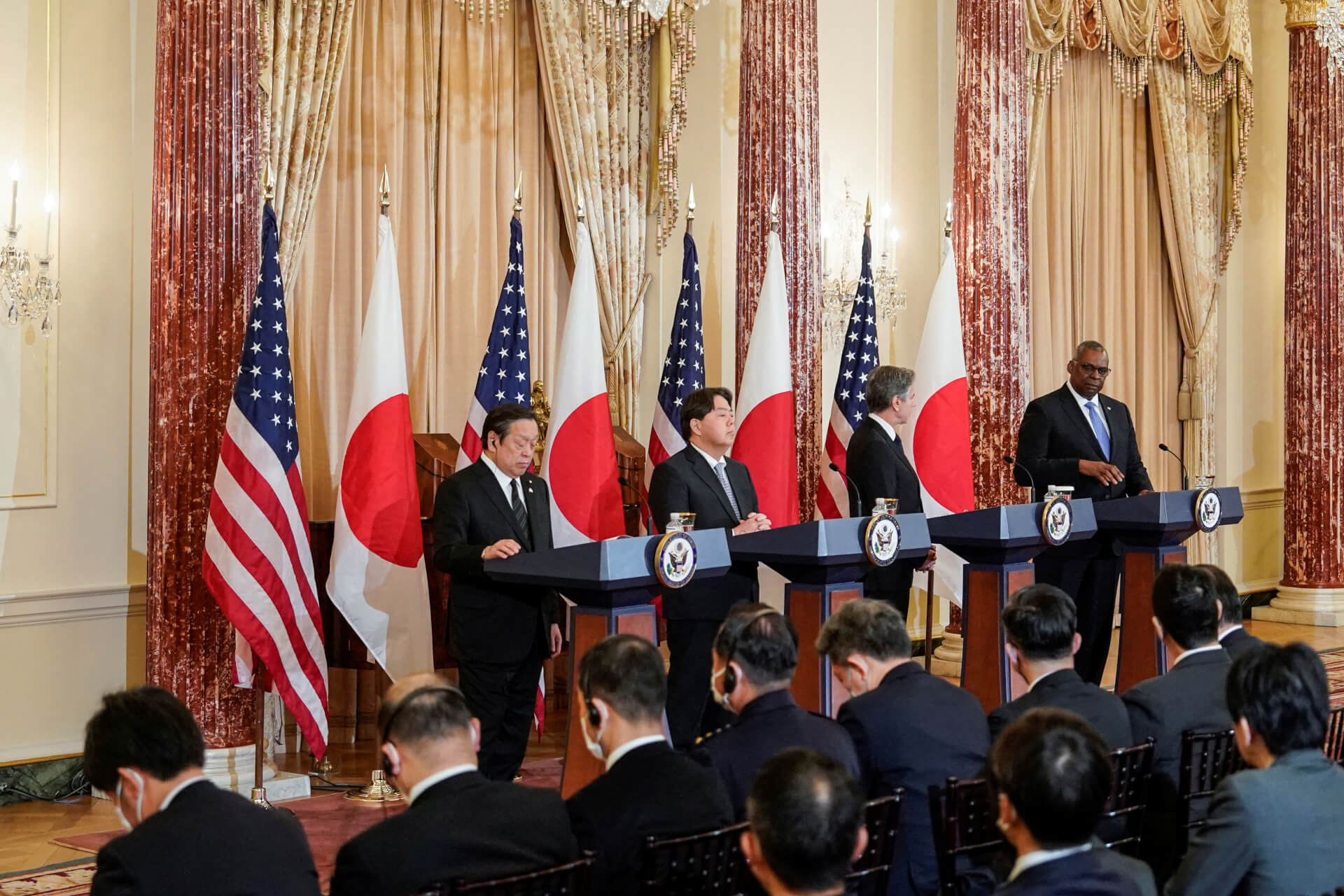The US Secretary of Defence Lloyd J. Austin III and Secretary of State Antony J. Blinken hosted Japan’s Defence Minister Hamada Yasukazu and Foreign Minister (FM) Hayashi Yoshimasa at the 2+2 Security Consultative Talks in Washington on Wednesday.
TIMING
The talks reiterated Japan’s position as the “cornerstone” for regional security. According to the US’ Department of Defence, the talks are timely owing to China becoming “more assertive,” Russia “[invading] a sovereign nation,” and North Korea “developing nuclear weapons and the means to deliver them.”
On January 11 (EST), #DMHamada attended🇯🇵🇺🇸Security Consultative Committee (“2+2”) with FM Hayashi, @SecDef Austin and @SecBlinken in the U.S. They had discussions to further strengthen deterrence and response capabilities of #JapanUSAlliance based on the new strategic documents. pic.twitter.com/Av2YN7jffG
— Japan Ministry of Defense/Self-Defense Forces (@ModJapan_en) January 12, 2023
The talks occurred ahead of Friday’s meeting between US President Joe Biden and Japanese PM Fumio Kishida.
OUTCOME
Austin said that the defence officials had made a “historic alliance decision” to “optimise” the “posture” of American troops in Japan “by forward-stationing more versatile, mobile and resilient capabilities.”
Specifically, the “new formation” will be equipped with “advanced intelligence, surveillance and reconnaissance, as well as anti-ship and transportation capabilities” that are “relevant to the current and future threat environments.”
Not the math I learned in school, but 2+2 = 1 amazing display of #USJapanAlliance unity in the face of threats from #PRC, #DPRK, and others. @SecBlinken, @MofaJapan_jp Minister Hayashi, @SecDef, & @MODJapan_jp Minister Hamada showing the way forward to secure the #IndoPacific. pic.twitter.com/zW3GVpr79K
— ラーム・エマニュエル駐日米国大使 (@USAmbJapan) January 12, 2023
He further “strongly endorsed Japan’s decision to acquire a counterstrike capability.”
Japan will also set up a permanent joint headquarters on the “command-and-control arrangements with an emphasis on interoperability” with US forces.
In addition, the ministers signed a Memorandum of Understanding for Research, Development, Test and Evaluation and a Security of Supply Arrangement, which aims to “increase technology co-development opportunities and strengthen supply chain linkages.”
Moreover, they committed to further deepen security cooperation with South Korea on “ballistic missile defence, anti-submarine warfare, maritime security, search and rescue, and humanitarian assistance/disaster relief,” and agreed to strengthen regional partnerships through the Quad and with other partners in Southeast Asia and Pacific Island countries.
Secretary Blinken and @SecDef Austin will co-host the 2023 U.S.-Japan Security Consultative Committee meeting with Japanese Foreign Minister Hayashi and Japanese Defense Minister Hamada on January 11th at the @StateDept. https://t.co/bZhkOEh1SG pic.twitter.com/Ewxq1iLaaH
— U.S. Asia Pacific Media Hub (@eAsiaMediaHub) January 9, 2023
COMMENTS
“These actions will bolster deterrence in the region and allow us to defend Japan and its people more effectively,” Austin remarked.
On the one hand, Blinken reaffirmed Washington’s commitment to “a free and open Indo-Pacific, including through the Indo-Pacific Economic Framework.” He further stressed the “importance of maintaining peace and stability” across the highly volatile Taiwan Strait.
On the other hand, Japan reaffirmed its determination “to lead in its own defence and to expand its roles,” in cooperation with the US and other like-minded partners, reiterating its goal of “actively” working to maintain regional peace and stability.

